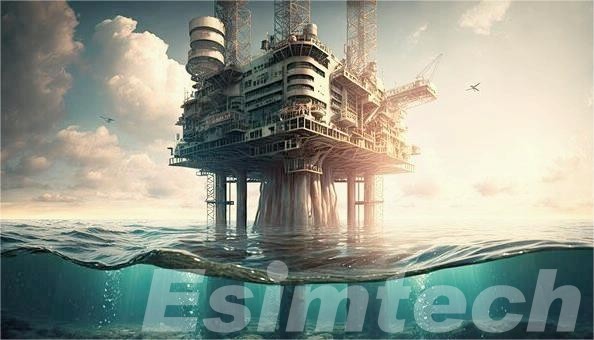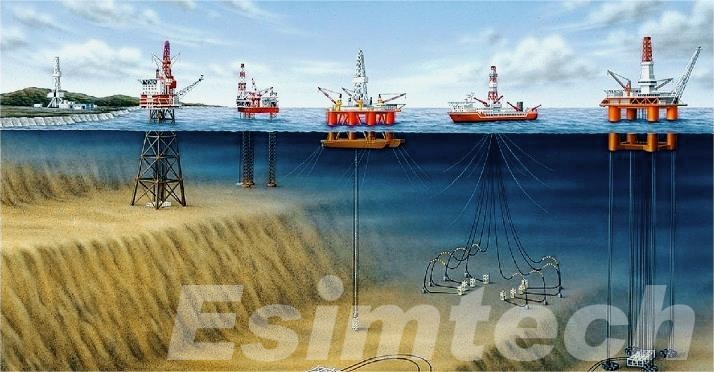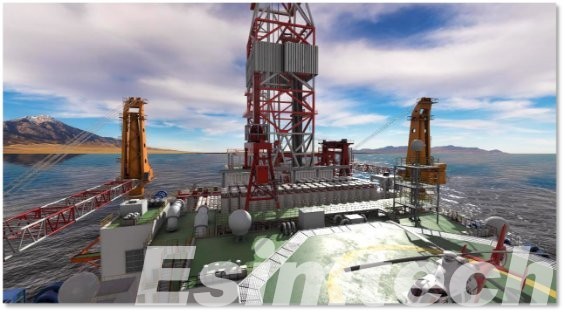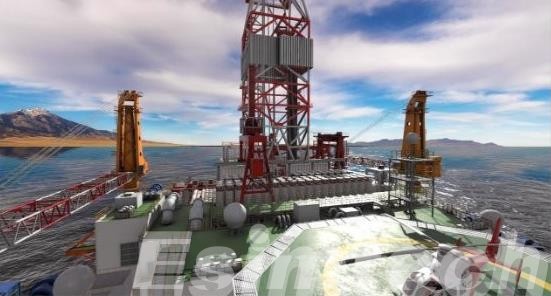What are Oil Rig Underwater Operations: Infrastructure, Challenges and the Significance of Simulation
Oil rigs, those towering behemoths of industry that dominate the sea’s horizon, are famous for their activities above the waterline. However, there exists a less-publicized but equally intricate realm beneath the ocean’s surface. In this submerged world, essential oil rig operations unfold to extract the valuable resources concealed deep within the Earth’s crust.
In this article, we’ll dive into the fascinating realm of oil rig underwater operations, exploring the equipment, challenges, and environmental considerations that make this aspect of the oil and gas industry both vital and unique. We’ll also discuss the crucial role that simulation plays in preparing workers for the intricacies of these underwater operations.

What is the Infrastructure for Oil Rig Underwater Operations
While the iconic structures of oil rigs dominate the skyline, a significant portion of the rig’s operations occurs beneath the waterline. Subsea infrastructure, including a vast network of pipelines, wells, and control systems, plays a pivotal role in extracting oil and gas from beneath the ocean floor.
- Subsea Wells
These are the primary conduits for extracting hydrocarbons from beneath the seabed. Subsea wells are equipped with various components, including blowout preventers (BOPs) to control well pressure and prevent blowouts.
- Flowlines and Pipelines
Once extracted, oil and gas are transported through a network of flowlines and pipelines to the surface facility on the rig or to shore. These pipelines are designed to withstand the harsh underwater conditions and transport resources safely.
- Control Systems
Complex control systems, often remotely operated, manage the subsea infrastructure. These systems monitor well conditions, control valve operations, and provide critical data to surface operators.
What are the Environmental Considerations of Oil Rig Underwater Operations
Oil rig underwater operations must adhere to strict environmental regulations to minimize their impact on marine ecosystems. Key considerations include:
- Spill Response Plans: Rig operators must have comprehensive spill response plans in place to address potential oil spills. These plans include containment and cleanup strategies.
- Marine Life Protection: Protecting marine life is crucial. Operators often implement measures such as using acoustic deterrent devices to minimize the impact of drilling and construction activities on marine mammals.

- Sediment Management: Managing sediments disturbed during operations is essential to prevent smothering of sensitive seabed ecosystems. Sediment plumes can be monitored and controlled to minimize their spread.
- Waste Disposal: Proper disposal of waste materials is critical. Waste must be collected, treated, and disposed of in accordance with environmental regulations.
What are the Challenges for Oil Rig Underwater Operations
Operating beneath the sea presents unique challenges and complexities that demand specialized expertise and equipment. Some of the key challenges include:
- Extreme Pressure
Oil rig underwater operations take place at great depths, subjecting equipment to extreme pressure conditions. Subsea components must be designed and constructed to withstand these pressures without compromising safety.
- Corrosion and Erosion
Seawater is corrosive, and the constant movement of water and sediments can cause erosion on underwater equipment. Regular inspections and protective coatings are essential to mitigate these issues.
- Remote Access
The underwater environment is inherently remote, making it challenging to access and maintain subsea equipment. Specialized remotely operated vehicles (ROVs) are used for inspections, maintenance, and repairs.
- Environmental Concerns
Protecting the marine environment is a top priority in oil rig underwater operations. Stringent regulations and environmental impact assessments are in place to ensure responsible resource extraction.

Why Simulation of Oil Rig Underwater Operations is Important
Simulation plays a pivotal role in mitigating the inherent risks associated with oil rig underwater operations. Here’s how simulation contributes to making these operations safer, more efficient, and environmentally sustainable:
- Training and Skill Development
Prior to venturing into the challenging underwater environment, workers undergo extensive simulation-based training. Simulators provide a controlled environment for workers to familiarize themselves with subsea equipment, practice emergency response procedures, and gain proficiency in operating ROVs safely. This training ensures that workers are well-prepared to confront the real-world challenges of underwater operations.
- Equipment Testing and Validation
Simulation is instrumental in the testing and fine-tuning of subsea equipment and control systems. By simulating various operational scenarios, engineers can identify and rectify potential issues before they manifest in the field. This proactive approach minimizes downtime and safety risks, enhancing operational efficiency.
- Emergency Response Drills
Regularly conducted simulated emergency scenarios, such as well blowouts or equipment failures, allow operators to refine their response protocols and coordination. These drills simulate high-stakes situations, ensuring that personnel are well-trained and prepared for swift and effective responses in the event of actual emergencies.
- Environmental Impact Assessment
Simulation tools are employed to assess the potential environmental impact of underwater operations comprehensively. By modeling various scenarios, operators can develop strategies to minimize their ecological footprint, ensuring that their activities align with environmental regulations and industry best practices.

Simulation plays a critical role in preparing workers for the complex and challenging underwater environment. It allows operators to practice various scenarios, improve their decision-making skills, and familiarize themselves with the equipment and systems they will encounter during subsea operations.
Conclusion
In general, oil rig underwater operations are a vital yet often overlooked facet of the oil and gas industry. Operating in a challenging underwater environment demands specialized equipment, expertise, and a strong commitment to environmental stewardship. As technology advances and the industry evolves, these operations will continue to play a significant role in meeting the world’s energy needs while navigating the complexities of the deep sea, with simulation serving as a cornerstone for safety, efficiency, and sustainability in this underwater frontier.
